
Official Edgar Rice Burroughs Tribute and Weekly Webzine Site Since 1996 ~ Over 15,000 Web Pages in Archive Presents Volume 6278 |

Official Edgar Rice Burroughs Tribute and Weekly Webzine Site Since 1996 ~ Over 15,000 Web Pages in Archive Presents Volume 6278 |

Eclectica Archive |

ECLECTICA v.2018.07 |
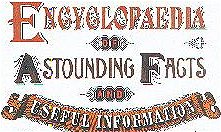
Eclectica Archive |
|
When her marriage started to dissolve she leaned upon Ed and the Burroughs family for support. |
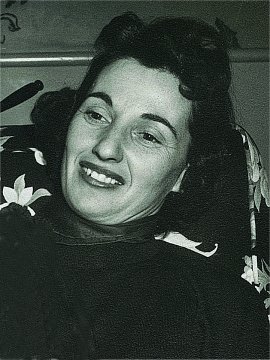
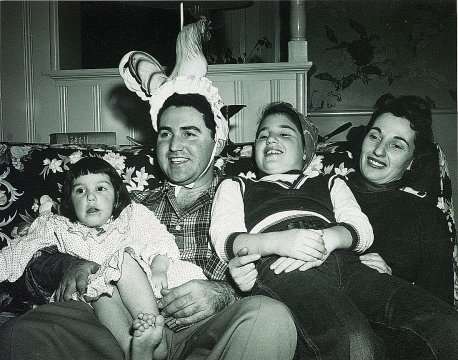
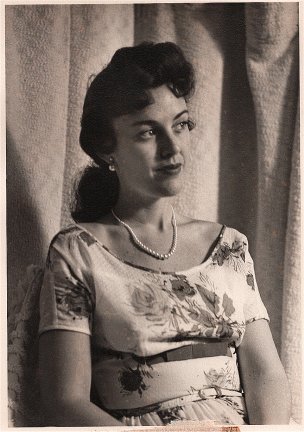
How many of you would like to see the movie, "Tarzan the Untamed"? I think we would all like to see that movie, but we can't. And Gomer Pyle wasn't able to see it either because he was roped in to taking the colonel's daughter to a dance. Watch about three and a half minutes of this episode, "A Date for the Colonel's Daughter," from Nov. 27, 1964, to find out what Gomer (Jim Nabors) was looking forward to seeing in the movie.
Tarzan the Untamed. . . on film ? :)
|
|
". . . Tarzan was one series written by Edgar Rice Burroughs, one of my favorite authors. We have discussed various writing styles in the Creative Writers group and Burroughs' style was and remains, one of my favorites. He didn't follow a single character through the story line, but followed the protagonist, antagonist and usually at least one other person or group until the climatic meeting of all involved. As the story progressed, each of these story lines overlapped and blended to show the synchronicity of the plot. It was a type of writing that was complicated but fast paced. If you haven't read the Tarzan series of books, please do. You will be delighted. . . ."
ODDS AND SODS
http://www.nevadadailymail.com/story/2291823.html
Added art from our ERBzine.com Paul Privitera Galleries
http://www.boredpanda.com/disney-princesses-reimagined-as-modern-girls-anoosha-syed/
I Illustrated Disney Princesses As Modern Day Girls Living In The 21st Century
Hi, I’m Anoosha. I’m a children’s book illustrator and character designer for animation. I love Disney princesses, and in my spare time I created a series of digital illustrations of what I imagine these girls would be like as 21st century teens/young adults. I tried to be accurate to their personalities, writing little backstories for each character. I also put little homages to their movies, can you spot them all?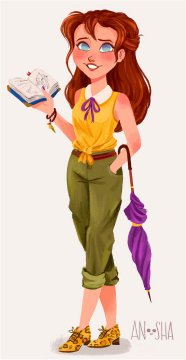
Jane Porter had just graduated from Central St. Martins with a scientific illustration degree when her father surprised her with an incredible opportunity. He wanted Jane to assist him in his research of African gorillas in the Congo rainforest for the rest of the year. It was one thing to spend your weekends sketching animals at the zoo, but to leave her life in London and go the the dangerous depths of the jungle where she’d be face-to-face with ferocious beasts and the possibility of being lost forever and who knows what else… It was reckless and dangerous, to say the least. She couldn’t wait.
http://hombredebronze.blogspot.ca/2016/08/roy-thomas-habla-de-su-trabajo-en-la.html
An interesting interview with Roy Thomas. Only some of
his comments are in English but there is some good artwork included.
I can't say that my writing in the current two strips
I do for ERB, Inc., is particularly influenced by any writers other than
Burroughs and, indirectly, Stan Lee.
The feel of the early Foster-drawn strips, whoever wrote
them, is part of what I strive for in TARZAN in particular.
As for art, I'm a fan of Foster's work on TARZAN, as Buscema
was... but I also like Hogarth
(whom Buscema professed to despise artwise).
Russ Manning I liked at the time to a great extent, but
it always seemed a bit too tame to me... too slick, bordering on lifeless.
https://www.facebook.com/strangeworldsofERB/
ERB Youtube Bios
https://www.youtube.com/watch?time_continue=43&v=riPMXTSgEMA
Remembering Edgar Rice Burroughs
This video clip was produced by Michael D. Sellers and
Mark Linthicum for the John Carter Files
(www.thejohncarterfiles.com) and Edgar Rice Burroughs
Inc
and was first presented at the Tarzan-John Carter Centennial
Celebration on August 18, 2012.
It is part of a longer documentary-in-progress entitled
"The Life and Mind of Edgar Rice Burroughs".
Most of the stills are featured at www.ERBzine.com
https://www.youtube.com/watch?v=9VP9s7wBwVs
Edgar Rice Burroughs 1875-1950
A nostalgic slide show remembering the old master, Edgar
Rice Burroughs,
on what would have been his 137th birthday, September
1, 2012.
Burroughs created Tarzan of the Apes, John Carter of
Mars, Carson of Venus,
and countless other fantastic worlds and compelling heroes.
Featured portrait by Don Marquez (www.cartunes.com) plus
other great artists from Burroughs' era
-- Franklin Schoonover, J. Allen St. John, and John Coleman
Burroughs.
Most of the uncredited stills are featured at www.ERBzine.com
https://www.youtube.com/watch?v=QC0De1Z3QVQ
100 Years In The Making
Andrew Stanton ~ Chabon ~ etc.
Short documentary about Edgar Rice Burroughs' Barsoom
stories, a
nd the efforts people have made for a century to get
them on screen. From the John Carter DVD
https://www.youtube.com/watch?v=4K2yDm-yvcQ
Everything Wrong With John Carter In 15 Minutes Or
Less
John Carter is based on a beloved novel, had a huge budget,
and was directed by one of Pixar's best. And yet it's still surprisingly
sinful given those facts.
(Contrived and Forced ~ Unfair Cheap Shots ~ Wrong and
Misinterpreted Facts)
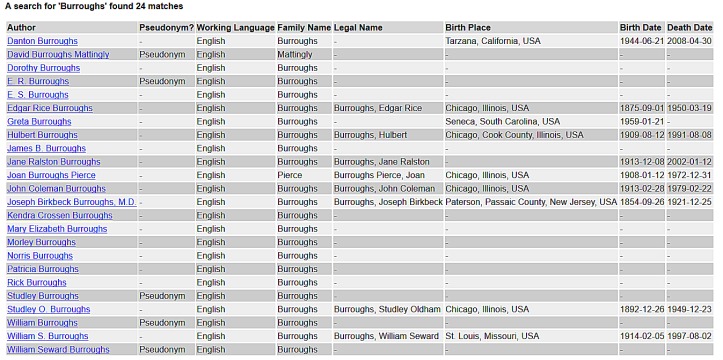
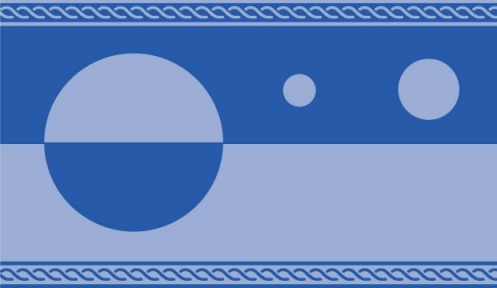
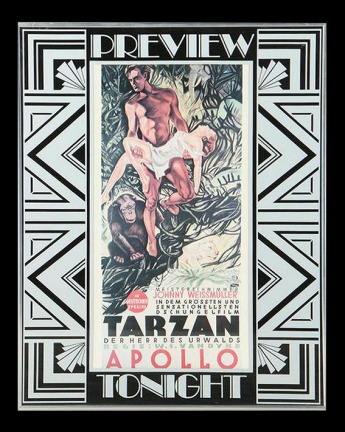
1932 Lithograph Tarzan Movie Poster by Atelier Konig Weninger
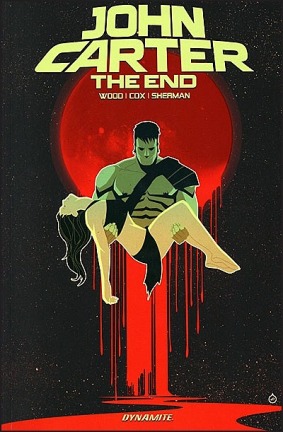
Doesn't sound like Burroughs to me.
Introducing a John Carter story like you've never seen before,
from co-writers Brian Wood (Star Wars, DMZ, Northlanders) and Alex
Cox (Adventure Time),
joined by artist Hayden Sherman (Civil War II: Kingpin).
For USD 19.99
Centuries have passed and time has taken its toll on Mars. Conflict
burns across the landscape.
A war of supremacy and genocide at the hands of a brutal despot
has brought the planet to the edge of collapse.
A search party has finally located an aged John Carter and Dejah
Thoris,
living in quiet seclusion on a desert moon, in perpetual mourning
for their lost son.
NAT.title
Of course there are complications: in addition to the typical jungle perils of wild animals and hostile natives, Martling is hounded by Raglan, a rival explorer in the employ of a munitions company that hopes to recover the explosive formula for its own use. In addition, both parties are being shadowed by a mysterious woman, Ula, who claims to be the widow of D’Arnot’s co-pilot, and who seems to have unfinished business with Raglan. She tries to foil Raglan’s plans, but is she on Martling’s side? What is her real aim?
NAT.idol
Deep in the jungle lies the Dead City, home to a tribe and a cult that is very much alive, worshiping the Goddess under the leadership of a tiger-striped high priestess. They threaten Martling’s party with sacrifice, even as Raglan steals the idol while the cultists are distracted. Were Martling and his party alone, this might be their end, but Lord Greystoke is not just the worldly traveler he appears to be: he is also Tarzan, Lord of the Jungle! Through an action-packed twelve chapters that includes fights with jungle cats, explosions, gunfights, espionage, and more, Tarzan and Martling race to recover the idol before Raglan can get it onto a ship bound to Europe, all while fending off the vengeful natives and the hooded warriors who will likewise stop at nothing to recover their Goddess, in The New Adventures of Tarzan!
NAT.priestess2
I’ll admit I had a hard time getting into The New Adventures of Tarzan at first, for a couple of reasons. In the copy I was watching, the sound started out kind of fuzzy, making it hard to hear the dialogue, and there is a lot of exposition to get out of the way, with numerous characters and their histories and motivations being introduced. Because The New Adventures was based on storylines from Edgar Rice Burroughs’ Tarzan novels (although not directly on any one novel), it is less streamlined than many later serials, and the accumulation of multiple subplots and shifting settings feels surprisingly modern, like an overstuffed summer blockbuster.
NAT.Tarzan.Martling
The first chapter is also forty minutes long, and contains several set pieces that could easily have been cliffhangers between chapters (Tarzan wrestles with crocodiles in a river, and later saves Major Martling’s daughter from a snare that suspends her over a jaguar pit). I have grown so accustomed to the rhythms of the serial that when these crises were resolved without chapter breaks and the chapter crept toward twenty-five, thirty, and thirty-five minutes in length, I started to wonder if the DVD producers had edited out all the chapter breaks (a move that would compromise this project, to say the least). But no, the first chapter is just extra-long, and does eventually end on a cliffhanger, like the other, shorter chapters.
NAT.Nkima1
I’m glad I stuck it out, however, as once the slow engine of story got underway and the excess baggage of characters and subplots was shed, The New Adventures of Tarzan turned out to be an engaging serial with a variety of colorful settings and some exciting action sequences. The main conflict, in which a well-intentioned, patriotic explorer and an unscrupulous mercenary fight over an ancient, powerful artifact, recalls both the 1933 Perils of Pauline and, of course, the later Raiders of the Lost Ark. (There’s also Martling’s notebook which contains the code necessary to open the idol, and which changes hands several times.)
NAT.deadcity1
Much of the serial was filmed on location in Guatemala, including Chichicastenango and the ruins of Tikal, by producer Ashton Dearholt; the conditions turned out to be almost as difficult for the cast and crew as for the characters on screen, with illness and bad weather taking their toll. The role of Raglan, credited to Dan Castello, was actually played by Dearholt himself after Castello had to drop out early on. The expense and danger of the production mostly end up on the screen, however. The big cats Tarzan fights are real (at least up until the moment an obviously stuffed cat is thrown down; some of these fights are better edited than others); the giant waterfalls over which characters (or, again, their dummy stand-ins) plunge are suitably impressive, giving the film an epic scope.
NAT.Tarzan2
On the other hand, the film shows some of the limitations of independent production: other than the chapter titles, there is little to no background music; combined with the relatively meager dialogue during Tarzan’s many solo excursions and only ambient sound, long stretches of The New Adventures could pass for a silent movie. One strange touch occurs in the Dead City: a recurring gong, sometimes the only thing heard on the soundtrack, is distorted enough to sound like the disturbing, unexplained drones David Lynch frequently includes in his films, and is a surprisingly eerie match for the scenes of torture and imprisonment by hooded inquisitors. (No, I never expected to make a comparison between a serial and Lynch either, but here we are.)
NAT.torture2
Tarzan himself (Herman Brix, who would later change his name to Bruce Bennett) is not the monosyllabic wild man of popular culture; because this serial was produced by Tarzan’s creator Edgar Rice Burroughs, it reflects the character as he appears in the books, speaking perfect English and transitioning effortlessly between his identities as Lord Greystoke and Lord of the Jungle. This version of Tarzan never says anything like “Me Tarzan, you Jane,” not least because Jane isn’t in this story.
NAT.Greystoke2
Whereas other film representations of Tarzan emphasized the noble savage or fish-out-of-water elements in his story, The New Adventures treats him more like a superhero: as Greystoke he wears his wealth and title easily, an aristocratic Bruce Wayne, but when there’s trouble he strips down to a loincloth and takes to the jungle, swinging on vines and talking to animals. His identity is far from secret, however, and he’s treated like a celebrity: Martling’s valet George, in fact, is described as “the flunky who joined the expedition to be closer to his idol, Tarzan.” Burroughs’ Tarzan represents a colonialist ideal: the “best of both worlds,” with all the education and material advantages of Western civilization and all the vigor, toughness, and native wisdom of his adoptive culture.
NAT.Tarzan3
In addition to its ambitious location shooting, The New Adventures stands out from the serials I’ve watched in other ways. Burroughs’ stories could be quite bloody, emphasizing “nature red in tooth and claw” and featuring villains evil enough to justify just about anything the good guys might do to them. That’s often sanitized in film and TV retellings, which are more kid-oriented than the books they’re based on. Although not especially graphic, The New Adventures includes gunplay, stabbings, explosions, and more, with (mostly) realistic consequences. No bloodless fistfights here: Tarzan and co. don’t mess around. The most surprising sequence involves George (who is otherwise comic relief) spraying machine gun fire at attacking waves of tribesmen from the Dead City as if in flashback to the Great War. Even Indiana Jones would save that kind of move for Nazi soldiers.
NAT.machinegun1
NAT.machinegun2
As I mentioned, the rhythm of this serial is also somewhat odd, with a profusion of subplots (especially at the beginning) that gradually thin out as D’Arnot is recovered and leaves with Alice and Gordon, and Ula joins Martling’s party. Once the idol is stolen, the vengeful warriors from the Dead City don’t pick up Raglan’s and Martling’s trail until Chapter Seven, and the action is essentially resolved in Chapter Eleven. Many serials include an “economy chapter,” in which flashbacks to earlier events are included to catch up latecomers: The New Adventures treats the last chapter as a recap, an anticlimax that serves only to tie up a few loose ends and put a cap on the serial. Still, I’ve come to appreciate the looser, less formulaic serials of the early ’30s, if only because they have more capacity to surprise; however lumpy its storytelling, The New Adventures of Tarzan is full of invention. No one is phoning it in.
NAT.Ula3
What I watched: The New Adventures of Tarzan (1935, Burroughs-Tarzan Enterprises)
Where I watched it: Pop Flix’s 2-DVD Classic Tarzan Collection, which also includes three features: Tarzan the Fearless, Tarzan’s Revenge, and Tarzan and the Trappers.
No. of chapters: 12
Best chapter title: “Devil’s Noose” (Chapter 3)
Best cliffhanger: At the end of Chapter 10 (“Secret Signals”), Tarzan confronts Raglan on the dock in Mantique as Raglan prepares to load the Goddess idol onto Simon Blade’s ship. There’s a scuffle with Raglan and his crew, during which the idol drops over the side of the dock, where it hangs from a rope. Raglan pulls a gun and commands Tarzan to step away from the idol, promising this will be “the last time you meddle in my business!” In a sequence straight out of a gangster film, after a close-up of Tarzan, the shot reverses to Raglan, the camera pointing straight down the barrel of his gun. Bang!
NAT.Tarzan6
NAT.Raglan2
Annie Wilkes Award for Most Blatant Cheat: In Chapter Nine (“Doom’s Brink”), one of the most action-packed chapters, the members of Martling’s party have been captured separately and taken to the Dead City by the Goddess’ worshipers. Each faces a different peril: Martling and George are taken to a torture chamber (!), Ula is imprisoned in a cell with an old woman who attempts to stab her, and Tarzan is tied up in the cell next to Ula’s with a chained lion. After overcoming the old woman, Ula uses her knife to dig through the wall separating herself from Tarzan. As Tarzan hurries to untie himself, the lion’s chain gives way; the last shot of the chapter is of the lion’s slavering jaws as it lunges at the camera.
NAT.Tarzan5
It looks like the game is up for Tarzan, no? As the beginning of Chapter Ten resets this peril, however, not only does Ula make a hole big enough to pass Tarzan the knife, he has time to untie himself and maneuver to the hole before the lion attacks, so he’s not even in the same place when the lion lunges off of its chain. (This is at least more satisfying than the chapter where Tarzan is caught in a spiked tiger trap, only to be grazed by the spikes instead of impaled: such “oh, I guess he’s okay” resolutions are even more anticlimactic than straight-up cheats, in my opinion.)
Funniest moment: Martling’s valet George (Lewis Sargent) has a lot of similarities to Professor Hargrave’s secretary Dodge from The Perils of Pauline, but despite his silly attachment to his yo-yo, his always-growling stomach, and his panicky reactions to mundane jungle plants and animals, George has a few serious moments. His machine gunning of natives from the Dead City (see above) is later paid back when George is the first to be tortured in Chapter Nine. Still, most of George’s scenes involve clowning of one kind or another, and I’ll admit to laughing when, in Chapter Seven (“Flaming Waters”), George is bitten and chased by a bunch of water turtles, an ordeal to which Tarzan responds with an epic eye-roll.
NAT.George2
Sample dialogue: “He reminds me of some of the jungle cats I’ve known: they’re most dangerous when they purr.” –Tarzan, referring to Captain Blade, Chapter 11 (“Death’s Fireworks”)
What others have said: “At one point, Burroughs had worried that so much local scenery had been eliminated from the episodes that the whole thing might just as well have been shot in Hollywood. But in the final edit, enough Mayan ruins, colonial cities, and Guatemalan Indians survive to create a richly exotic and authentic backdrop. And for once, Tarzan is able to swing through trees other than the sycamore and eucalyptus so predominant in earlier films shot in or near Los Angeles.” –John Taliaferro, Tarzan Forever: The Life of Edgar Rice Burroughs, Creator of Tarzan
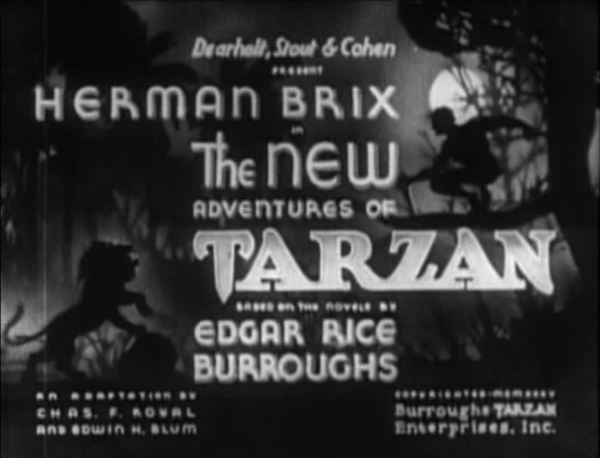
![]()

![]()
BILL
HILLMAN
Visit
our thousands of other sites at:
BILL
AND SUE-ON HILLMAN ECLECTIC STUDIO
ERB
Text, ERB Images and Tarzan® are ©Edgar Rice Burroughs, Inc.-
All Rights Reserved.
All
Original Work ©1996-2017/2018 by Bill Hillman and/or Contributing
Authors/Owners
No
part of this web site may be reproduced without permission from the respective
owners.